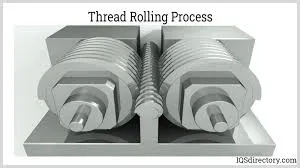
-
 Afrikaans
Afrikaans -
 Albanian
Albanian -
 Amharic
Amharic -
 Arabic
Arabic -
 Armenian
Armenian -
 Azerbaijani
Azerbaijani -
 Basque
Basque -
 Belarusian
Belarusian -
 Bengali
Bengali -
 Bosnian
Bosnian -
 Bulgarian
Bulgarian -
 Catalan
Catalan -
 Cebuano
Cebuano -
 Corsican
Corsican -
 Croatian
Croatian -
 Czech
Czech -
 Danish
Danish -
 Dutch
Dutch -
 English
English -
 Esperanto
Esperanto -
 Estonian
Estonian -
 Finnish
Finnish -
 French
French -
 Frisian
Frisian -
 Galician
Galician -
 Georgian
Georgian -
 German
German -
 Greek
Greek -
 Gujarati
Gujarati -
 Haitian Creole
Haitian Creole -
 hausa
hausa -
 hawaiian
hawaiian -
 Hebrew
Hebrew -
 Hindi
Hindi -
 Miao
Miao -
 Hungarian
Hungarian -
 Icelandic
Icelandic -
 igbo
igbo -
 Indonesian
Indonesian -
 irish
irish -
 Italian
Italian -
 Japanese
Japanese -
 Javanese
Javanese -
 Kannada
Kannada -
 kazakh
kazakh -
 Khmer
Khmer -
 Rwandese
Rwandese -
 Korean
Korean -
 Kurdish
Kurdish -
 Kyrgyz
Kyrgyz -
 Lao
Lao -
 Latin
Latin -
 Latvian
Latvian -
 Lithuanian
Lithuanian -
 Luxembourgish
Luxembourgish -
 Macedonian
Macedonian -
 Malgashi
Malgashi -
 Malay
Malay -
 Malayalam
Malayalam -
 Maltese
Maltese -
 Maori
Maori -
 Marathi
Marathi -
 Mongolian
Mongolian -
 Myanmar
Myanmar -
 Nepali
Nepali -
 Norwegian
Norwegian -
 Norwegian
Norwegian -
 Occitan
Occitan -
 Pashto
Pashto -
 Persian
Persian -
 Polish
Polish -
 Portuguese
Portuguese -
 Punjabi
Punjabi -
 Romanian
Romanian -
 Russian
Russian -
 Samoan
Samoan -
 Scottish Gaelic
Scottish Gaelic -
 Serbian
Serbian -
 Sesotho
Sesotho -
 Shona
Shona -
 Sindhi
Sindhi -
 Sinhala
Sinhala -
 Slovak
Slovak -
 Slovenian
Slovenian -
 Somali
Somali -
 Spanish
Spanish -
 Sundanese
Sundanese -
 Swahili
Swahili -
 Swedish
Swedish -
 Tagalog
Tagalog -
 Tajik
Tajik -
 Tamil
Tamil -
 Tatar
Tatar -
 Telugu
Telugu -
 Thai
Thai -
 Turkish
Turkish -
 Turkmen
Turkmen -
 Ukrainian
Ukrainian -
 Urdu
Urdu -
 Uighur
Uighur -
 Uzbek
Uzbek -
 Vietnamese
Vietnamese -
 Welsh
Welsh -
 Bantu
Bantu -
 Yiddish
Yiddish -
 Yoruba
Yoruba -
 Zulu
Zulu
CNC Thread Rolling Machine for Precise and Efficient Thread Production
CNC Thread Rolling Machines An Overview
CNC (Computer Numerical Control) thread rolling machines have gained significant prominence in the manufacturing sector, particularly in industries that require precision in metal forming processes. These machines are designed to create threads on various materials by rolling, rather than cutting, providing several advantages that enhance product quality and reduce production costs.
Understanding Thread Rolling
Thread rolling is a cold forging process that reshapes the material without removing any metal, producing threads through compressive forces. This process helps to achieve tighter tolerances, higher strength, and enhanced durability compared to traditional cutting methods. In CNC thread rolling machines, computer numerical control technology is utilized to automate the process, allowing for higher precision, repeatability, and efficiency.
Key Components of CNC Thread Rolling Machines
1. Control System The heart of a CNC thread rolling machine lies in its advanced control system. This system enables operators to program intricate patterns and specifications for various threading requirements. By leveraging CAD/CAM software, manufacturers can design and modify thread profiles, ensuring that the final product meets exacting standards.
2. Rolling Dies These are critical components that engage with the workpiece to form threads. High-quality rolling dies are usually made from hardened steel or other durable materials to withstand the significant pressures involved in the rolling process. The configuration of the dies determines the size and shape of the threads produced.
3. Hydraulic System Many CNC thread rolling machines incorporate hydraulic systems to provide the necessary force for rolling. The hydraulic press operates the rolling dies, ensuring consistent pressure and efficient operation throughout the production cycle.
4. Workholding Fixtures Proper workholding is essential for achieving precision during the rolling process. Fixtures are designed to securely hold the workpiece in place, minimizing vibration and movement that could affect thread quality.
Advantages of CNC Thread Rolling Machines
cnc thread rolling machine product

CNC thread rolling machines offer a multitude of benefits, making them a preferred choice in many manufacturing applications
1. Increased Precision The automated control facilitates extremely accurate thread dimensions, which is critical in applications requiring strict tolerances.
2. Enhanced Strength The cold working process enhances the mechanical properties of the material, resulting in threads that exhibit superior tensile strength and fatigue resistance.
3. Material Efficiency Since thread rolling does not remove material, it minimizes waste, leading to cost savings in raw materials and reduced environmental impact.
4. Production Speed CNC machines can operate at high speeds, allowing for higher throughput compared to traditional threading methods, making them ideal for mass production.
5. Versatility CNC thread rolling machines can accommodate a variety of materials, including steel, aluminum, brass, and plastic, making them adaptable to different production requirements.
Applications of CNC Thread Rolling Machines
CNC thread rolling machines are widely used across various industries, including automotive, aerospace, and construction. They are essential in the production of components such as screws, bolts, and fasteners that require high strength and reliability. In the automotive sector, thread rolling is critical for creating engine components that can withstand harsh operational environments.
Conclusion
CNC thread rolling machines represent a significant advancement in manufacturing technology, offering precision, efficiency, and strength that are crucial for modern industry demands. By adopting this innovative technology, manufacturers can enhance their production processes, reduce costs, and ultimately deliver higher quality products to their customers. As industries continue to evolve, the role of CNC thread rolling machines will undoubtedly grow, paving the way for enhanced manufacturing capabilities and greater competitiveness in the global market.
